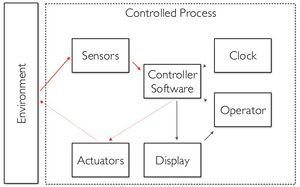Embedded System
An embedded system is a dedicated computer system designed for one or two specific functions. This system is embedded as a part of a complete device system that includes hardware, such as electrical and mechanical components. The embedded system is unlike the general-purpose computer, which is engineered to manage a wide range of processing tasks. Because an embedded system is engineered to perform certain tasks only, design engineers may optimize size, cost, power consumption, reliability and performance. Embedded systems are typically produced on broad scales and share functionalities across a variety of environments and applications.[1]
Basic Structure of an Embedded System[2]
The basic structure of an embedded system includes the following components:
- Sensor: The sensor measures and converts the physical quantity to an electrical signal, which can then be read by an embedded systems engineer or any electronic instrument. A sensor stores the measured quantity to the memory.
- A-D Converter: An analog-to-digital converter converts the analog signal sent by the sensor into a digital signal.
- Processor & ASICs: Processors assess the data to measure the output and store it to the memory.
- D-A Converter: A digital-to-analog converter changes the digital data fed by the processor to analog data
Actuator: An actuator compares the output given by the D-A Converter to the actual output stored and stores the approved output.
References
- ↑ Definition - What does Embedded System mean? Techopedia
- ↑ What is the Basic Structure of an Embedded System? Omni SCI

